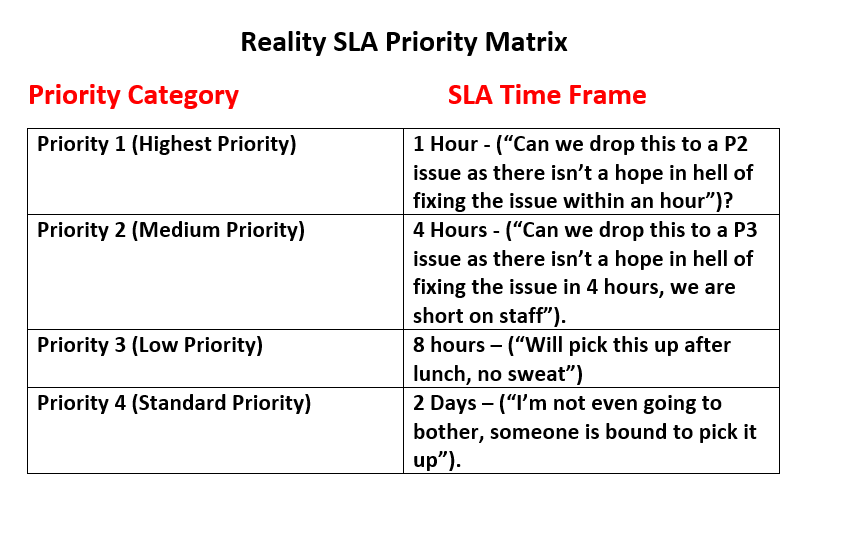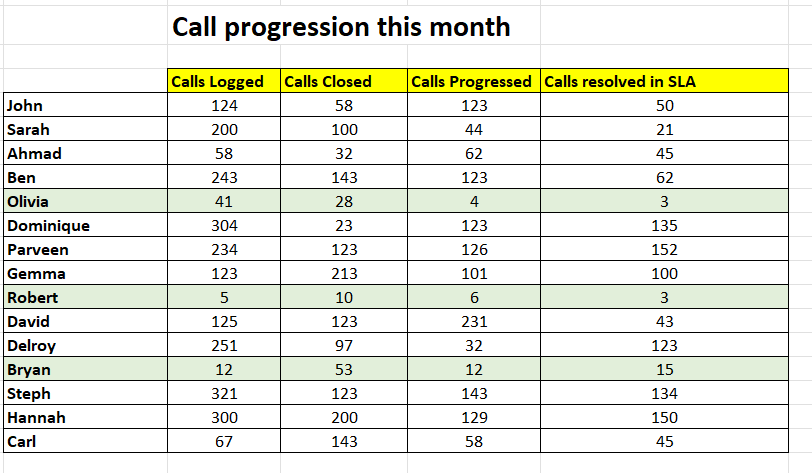How does the customer help desk work?
Let's be careful when we use the word 'Help Desk'. A help desk should be able to help you with anything. After all, when companies refer to their customer service team as a help desk, they are opening up all sorts of invitations, especially for people who would normally call the Good Samaritans.
A help desk should be able to help you with anything:
- Pay off your debts
- Find you a partner
- Cure your depression
- Make your mother-in-law disappear
- Find your missing cat
- Drop off shopping at your house
- Pretty much make your dreams come true

In the world of Information Technology Infrastructure Library (ITIL), a help desk is referred to as a service desk. For more information regarding this, please refer to the link below.
There are thousands, if not millions, of service desk analysts around the world who help clients resolve issues in an efficient and timely manner.
According to some, the service desk is at the heart of the organisation and keeps the business running. Others will see it as an inefficient function that can be viewed as an untrustworthy threat when a service needs to be repaired.
The artillery of incidents is machine-gunned into the service desk on a daily basis, creating a nightmare for the analysts attempting to manage them; and when a mortar shell lands, a (Major incident), it can leave a trail of destruction in its wake.
The Service Desk Analyst
A service desk analyst will attempt to resolve an issue in which a service has gone down and is no longer operational, or the customer desires something that is not available. This will entail the customer queuing and the issue is resolved as soon as possible because they paid for a f*cking service that should work. Right?
In retrospect, the process should be simple. The service desk has a time window to resolve the ticket once it is logged. This is known as an SLA (Service Level Agreement). Some may refer to it as a (Service Lying Agreement). There will be different time frames to resolve an issue at hand depending on the type of category the issue falls under and its priority.
Please refer to the table below as an example:


Every day, analysts face enormous challenges, and if tickets are not resolved within the SLA, heads will roll.
Starting out in the role as a newcomer will take time to learn, and you may be thrown in at the deep end and expected to understand the entire company's complex workings in a single day.
There will undoubtedly be analysts who have been doing the job for years and have all the technical knowledge and know-how to perform with their eyes closed. Seek them out as soon as possible, but be warned: if they are aged dinosaurs who are part of the fixtures and fittings, they may not want to share their golden knowledge with you right away.
Take special care with dinosaurs! The key is to not let them believe you are superior to them, even if you are. If there is a group of them, you must infiltrate the group and learn everything you can about them. Discover their flaws and document everything they say. For all the years they have spent working for the company and not leaving the service desk, they may be bitter.
The dinosaurs will also know everything there is to know about everyone, which will be useful, especially when dealing with senior management.
Used and abused
The rest of the company's employees will take advantage of the service desk. Project managers, account managers, directors, and others will seek out naive and inexperienced analysts and ask them to take on side projects and possibly secret missions. You will also be required to attend customer meetings as a backup in the event of a service failure. Given that no details of the meeting will be provided to you in the first place, you are more than likely to be thrown under the bus at the same time.
Almost all service desks have team leaders, and these individuals are looking for ways to advance off the service desk or at the very least to the position of service desk manager. They tend to do the people management work that the SD manager does not have to do, such as monitoring analysts, micromanaging, and weeding out bad apples who don't always follow the rules of the game. They typically rely on report monitoring tools to provide daily, weekly, and monthly statistics to analysts. The service desk manager can then evaluate the report. If a team leader wants to fire an analyst, you can bet the SD Manager has been given a list of all the times they forgot and left their phone on call waiting.
The service desk manager
The service desk manager is the big cheese on the service desk and is responsible for performance activity. They will confide in their team or team leaders to identify trends of success and failure based on individual responsibilities. This will also determine the bottom lickers and those who simply don't care. Don't expect to have an easy time with your feet up and expect to keep your job for long. Even if the statistics are manipulated, they do not lie. Sometimes your face just doesn't fit.
Service Desk statistics report

As you can see from the report, Olivia, Robert, and David did not contribute to the overall call performance this month. There may be valid reasons to believe they were on annual leave or working on side projects, but this gives a good indication of who is and isn't pulling their weight.
The service desk manager in the image below will need to collaborate with the team leaders to devise a strategy to determine whether there are any underlying issues with the individuals involved. A personal improvement plan (PIP) may be required, or there may be issues occurring outside of work. Or they could be completely useless.

Escape the trench
In order to get promoted and noticed the analyst will need to work their way up to team leader, then service desk manager. There may be other positions outside of the service desk and depending on what senior management they may have worked with, could be impressed with their skills and provided them with a job as a project manager.
If they want to remain on the service desk, then this isn't a problem either. They will need to learn how to play the game and remember knowledge is power.








